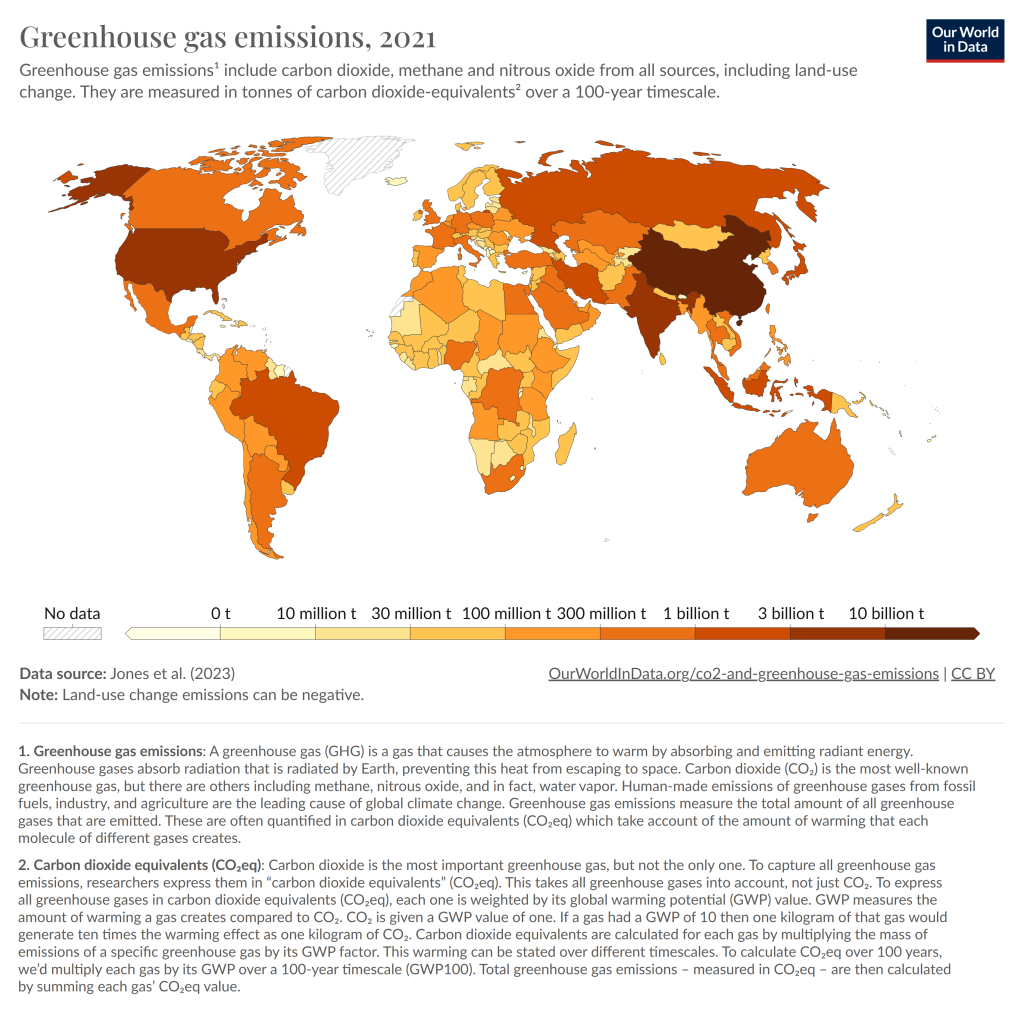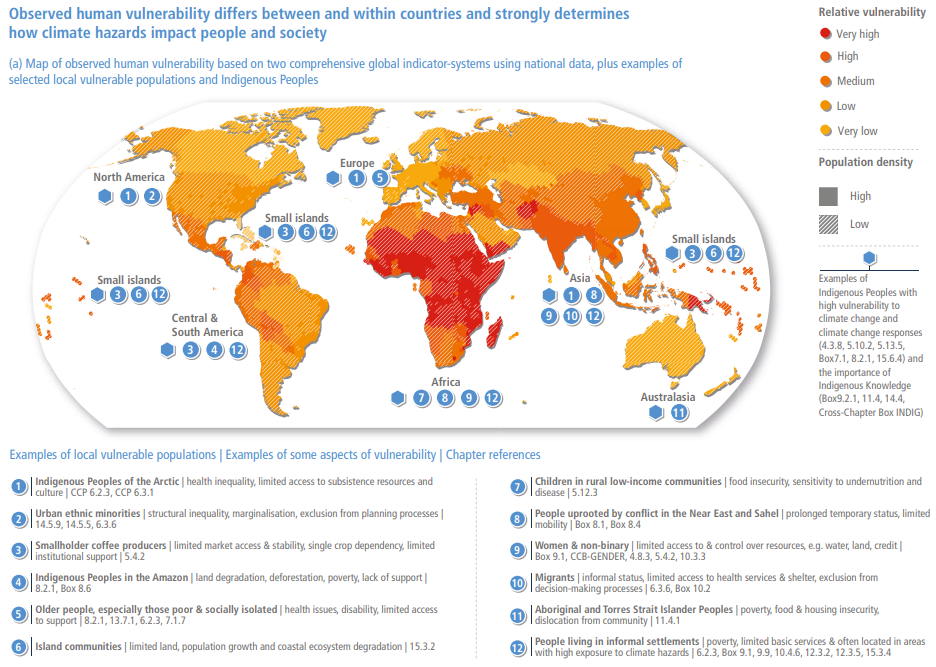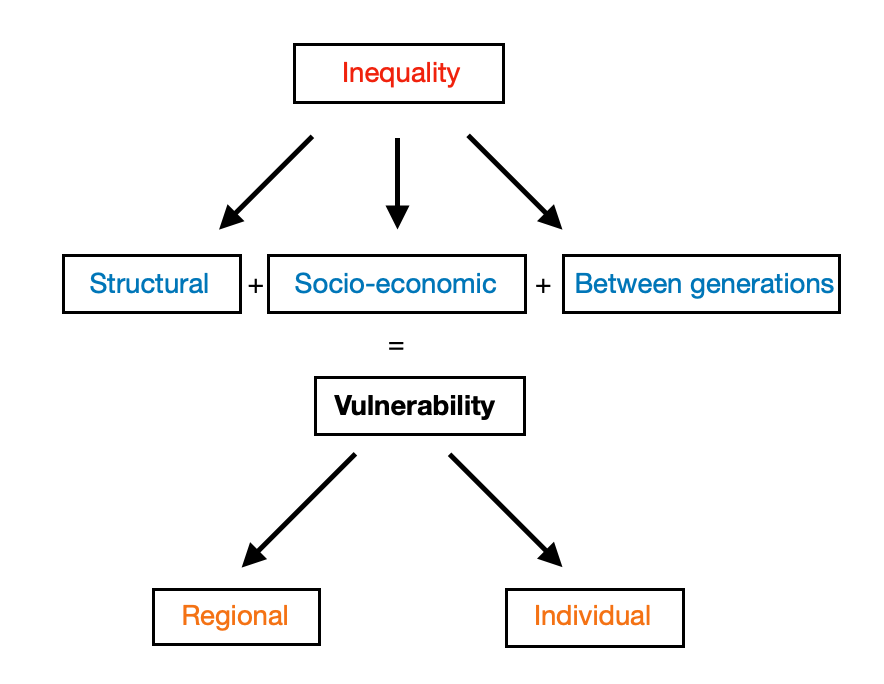The impact of Climate change now transcends environmental boundaries to extend into social, economic and wider spheres. By creating inequalities that are not limited to climate disruption, Climate change is exposing disparities in people’s Vulnerability to phenomena such as flooding. This diversity of Vulnerability underlines the importance of recognising that we are not all equal in the face of climate challenges. In this context, government intervention becomes crucial to mitigate these inequalities and promote an equitable approach to Climate change. Whereas Equality could mean an identical distribution of resources, Equity seeks to adapt to the diverse realities of populations in order to reduce existing disparities in the face of environmental challenges.
There are two types of Justice (Laigle, 2019):
- Distributive: the distribution of benefits and costs of climate action (and inaction)
- Procedural: the decision-making process ( participation, knowledge and collaborative resolution ..)
$
1. Climate change as an aggravating factor in Inequality
According to the french organization Observatoire des Inégalités, Inequality exists when “a person or group holds resources, engages in practices or has access to goods and services that are socially hierarchical”, meaning “that some of the others do not hold”. To speak of Inequality, there must be a hierarchy, otherwise we speak of differences. Inequalities can be observed between categories of populations (social background, origin, age, gender, ….) and apply in different areas: social, economic or even environmental with the notions of climatic and environmental inequalities. The accumulation of these inequalities makes people or territories vulnerable.
Climate and environmental inequalities can be classified in two complementary dimensions. These inequalities have a territorial dimension when they depend on where we are and a temporal dimension when they depend on when we are.
These inequalities can vary according to the scale used. Inequalities will not be the same if they are studied at the level of a territory or an individual.
According to the United Nations Development Programme (UNDP, 2023), there are three main types of Inequality within Climate Justice:
- Structural inequalities: persistent and deep disparity between different groups, resulting from structural factors such as Policies, institutions or economic systems that favour some groups at the expense of others.
- Socio-economic inequalities: unequal distribution of the consequences and resources essential for adapting to Climate change.
- Inequality between generations: the human rights of future generations are determined by the decisions taken by present and past generations.
Social and environmental inequalities are made up of dynamic links. On the one hand, Climate change and the deterioration of the environment primarily affect the most disadvantaged and poorest sections of the population, because their lifestyles are more dependent on variations in their environment. These populations are often farmers, dependent on climatic events. In addition, vulnerable groups and minorities find it harder to make their voices heard in planning decisions and public consultation.
This leads to an accumulation of negative consequences (poverty, famine, disease, etc.) and tends to significantly increase their Vulnerability.
On the other hand, the ecological footprint of the richest (pollution, waste, etc.) is passed on to the poorest and most vulnerable populations. A study of economic exchanges and material flows between the countries of the North and South shows that the ecological and social costs are shifted to the exporting countries because it is in these countries that the environment is deteriorating. Indeed, the rich countries of the North consume products manufactured in the poor countries of the South, and the environmental and social consequences are therefore established in these producer countries, making them more vulnerable. These countries thus pay for the consumption of rich countries without compensation for the costs and consequences. This is what is known as the “ecologism of the poor”. This term gives rise to the idea of an “ecological debt”.
A society’s relationship with nature is also a determining factor in inequalities in the face of Climate change. Some groups are more vulnerable to the consequences of Climate change because existing differences in the way groups construct their relationship with nature are not taken into account. “Not all individuals, depending on their culture, where they live and how they live, construct the same relationship with the environment” (Laigle, 2019).
Global climate injustices do not depend solely on the local consequences of Climate change, but also on the potential of societies to renew their public policy on Climate change. Indeed, a lack of reflexivity and laissez-faire attitude on the part of public authorities, together with a significant lack of preparation and inadequate preventive measures in the face of climatic hazards, can lead to an increase in inequalities and Vulnerability in the face of these climatic phenomena.
$
$
2. Climate Justice differs between regions
According to the United Nations Development Programme (UNDP, 2023), between 2010 and 2020, human mortality due to floods, droughts and hurricanes was 15 times higher in highly vulnerable regions than in less vulnerable regions.
The Vulnerability factors of these regions are:
- Socio-economic: regions whose economies rely heavily on agriculture, fishing or other climate-sensitive sectors are more vulnerable to weather variations. In addition, people living in poverty are the hardest hit and are therefore the most vulnerable, as they will have the fewest resources to invest in Resilience infrastructures and in the necessary reconstruction after natural disasters made more frequent by Climate change.
- Geographical: Regions located in coastal areas, prone to flooding, storms or heat waves, are often more vulnerable. Similarly, arid areas can be affected by phenomena such as desertification.
- Political and institutional: The potential of societies to “renew their democratic functioning”. The lack of reflexivity in institutions and in the Policies of states and local authorities is leading to the social disasters generated by Climate change being amplified. The ‘laissez-faire’ attitude of institutions, poor preparation for climatic hazards and inadequate preventive measures (building levees without draining the Mississippi River and upstream expansion zones, etc.) have increased inequalities in Resilience. (Laigle, 2019)
- Cultural: A number of livelihoods sustaining unique cultures in Europe are particularly vulnerable to Climate change: “indigenous communities in the European polar region due to their dependence on cryosphere ecosystems and communities that rely on small-scale fishing, traditional agriculture and unique cultural landscapes” (Kovats et al., 2014; Ruiz-Díaz et al., 2020).

This reality raises the question of Justice, particularly current Climate Justice. This form of Justice is based on the fact that the countries and peoples that have historically contributed the least to Climate change are suffering the most from it and are finding it most difficult to protect themselves and adapt to it. As the two maps show, the nations emitting the most greenhouse gases in 2021 (Figure 2) are not the most vulnerable (Figure 2). In fact, the opposite is true. The American and African continents are particularly blatant examples of climate injustice.
Certain countries, often industrialised and developed, have historically emitted large quantities of greenhouse gases as a result of their industrial activities and economic development. These emissions have contributed significantly to Climate change. Paradoxically, regions that have contributed relatively little to greenhouse gas emissions may be among the most vulnerable to the effects of Climate change. This may be due to factors such as geography, economy, demography and other characteristics specific to these regions.
In conclusion, regions vulnerable to Climate change raise concerns about Climate Justice, highlighting the inequity between historical contributors to greenhouse gas emissions and those who suffer most from the impacts. The Vulnerability factors specific to each region call for tailored Adaptation strategies.
Furthermore, it is crucial to emphasise that the most vulnerable populations also reside within these vulnerable territories.

$
$
3. Vulnerability at different scales: from the individual to the territory
The impact of Climate change, particularly extreme weather events such as flooding, does not affect all populations uniformly, which raises questions about the Equity of populations in the face of Climate change. This heterogeneity of Vulnerability occurs on several scales, from country to individual. For example, the town of Ault in France is at Risk of coastal erosion, which makes people living along the coastline vulnerable. However, the town’s residents living inland are not affected, or at least not directly, by this Risk.
In this way, we can highlight two main types of Vulnerability: the first expressed on a regional scale and the second on an individual scale.
We saw earlier that regional Vulnerability can be socio-economic, geographical, political or institutional. A region is linked to major issues that are characteristic of it. Even if the issues are localised, it is the region as a whole that is affected by this Vulnerability. So the Vulnerability of an area is linked to the Vulnerability of its issues. (Defossez et al., 2018)
Individual Vulnerability is unique to each person as it depends on the characteristics of the individual. It can be determined according to 7 criteria: Coping capacity, Neighborhood characteristics, Risk perception, socio-economic, land tenure, demographics and health. If you want to learn more, the criteria are developed on the Vulnerability page.
Individual Vulnerability can also be determined according to three factors, highlighted by Defossez, Vinet and Leone in 2018. The first, extrinsic factor, depends on the environment in which the individual finds himself, and therefore on his location in relation to the Hazard. For example, an individual will be more vulnerable if he is in a flood with 1 m of water than if he is in just 10 cm of water.
The second, intrinsic to the individual, depends on their physical and psychological aptitudes in the face of flooding. For example, someone who knows how to swim or is more resistant to the cold will be less vulnerable to flooding. To limit this Vulnerability, people can be trained to be prepared in the event of a flood.
The third depends on the individual’s behaviour (Defossez et al., 2018).
Several research projects have been carried out to identify the most vulnerable populations.
For example, people who are socially, economically, culturally, politically or institutionally marginalised, such as children, the elderly and those with health problems, are particularly vulnerable to Climate change, as highlighted by Laigle (2019).
In addition, groups such as farmers, socially isolated individuals, and those with limited knowledge (e.g. language) also show greater Vulnerability. These examples are common in the literature.
The Finnish case study shows that farmers are vulnerable to flooding. Indeed, they are directly affected by Climate change, as their livelihoods depend largely on weather and climate conditions. Floods can destroy crops, leading to significant financial losses and compromising food security. Farmers, often dependent on natural resources and seasonal cycles, find it difficult to adapt quickly to rapid Climate change, making them more vulnerable to water-related disasters.
Individuals in situations of social isolation (the elderly, the disabled or geographical/psychological isolation) also face increased risks. They may have less access to information on weather forecasts, emergency warnings and the resources needed to cope with flooding. Social isolation can also mean a lack of support networks, making it difficult to respond quickly and effectively in the event of a Disaster.
In addition, individuals with limited knowledge, such as those who are not fluent in the local language, may face additional barriers. Understanding warnings, evacuation instructions and crucial information during a crisis can be particularly difficult for those who do not speak the majority language. This can lead to delays in decision-making and inappropriate actions, increasing their Vulnerability to flooding and other consequences of Climate change.
In addition, the ability of individuals to avoid or cope with these climatic hazards depends on their financial resources, the extent of their social networks, whether or not they own their home, and other factors.
Vulnerability is therefore expressed at different levels, of which we have identified two: individual and regional. Since individuals are not vulnerable in the same way, and the same applies to territories, this calls into question the Equality and Fairness of these individuals or territories in the face of Climate change.
DIG DEEPER…
$
$
If you would like to find out more about vulnerable populations, go to the “stakeholders and communication” page.
If you would like to find out more about actions that can be taken to achieve Climate justice, go to the “Resources” page.
The aim of Climate justice is to provide vulnerable populations or territories with the means to take action in the face of Climate change, because of the inequalities they suffer. It is therefore a movement that advocates Equity between individuals and territories.
But do Public policies take account of this inequitable Vulnerability?
We seek to answer this question in the other sections of this webdoc, based on 8 case studies from 4 European countries: France, Belgium, Finland and the United Kingdom.
Want to go further?

